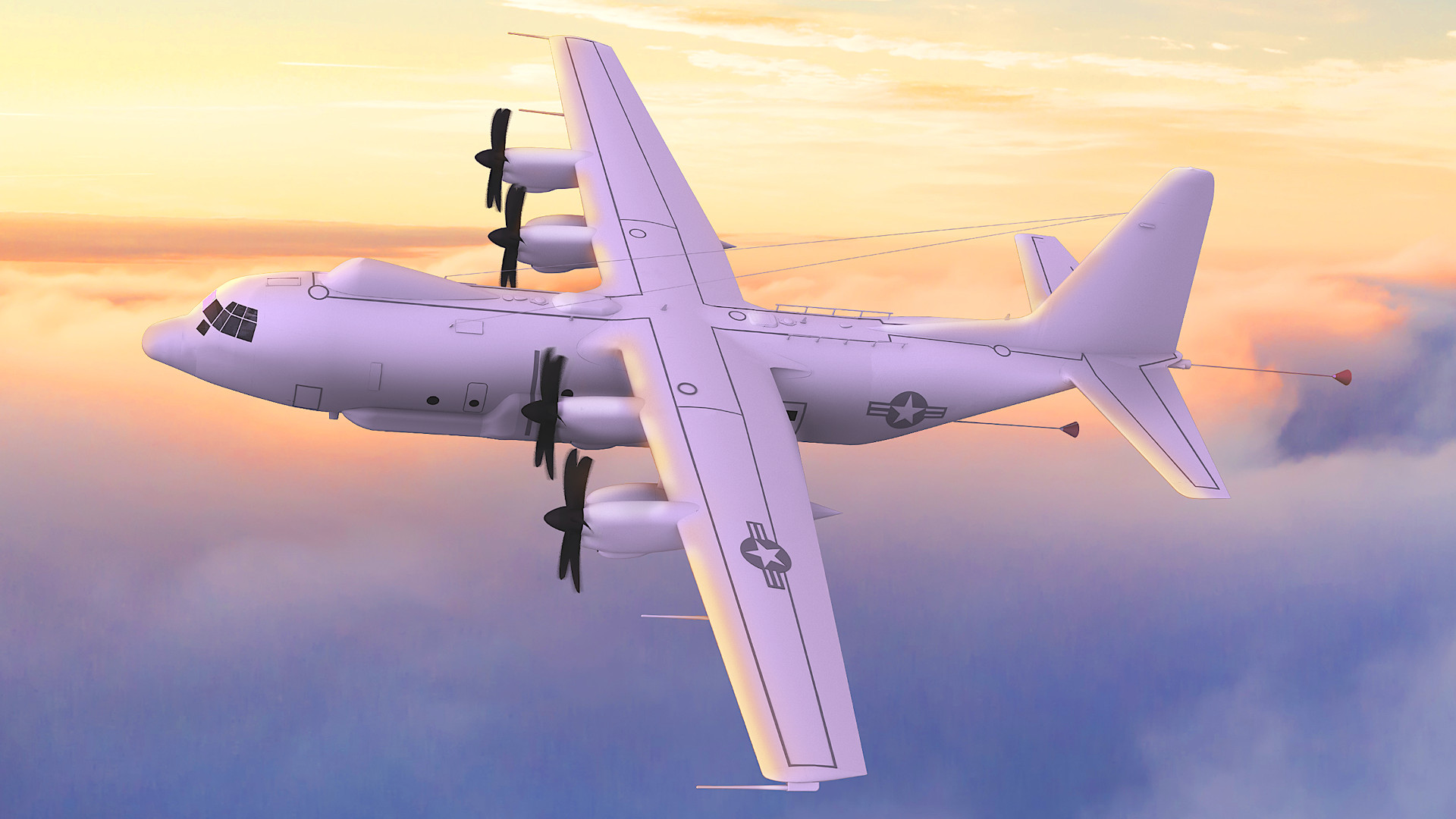Northrop Grumman has released a new rendering of the U.S. Navy’s future E-130J aircraft to support the Take Charge And Move Out (TACAMO) mission. TACAMO is a critical component of America’s deterrent posture and involves providing airborne command and control support for nuclear ballistic missile submarines, including being able to send orders to them to launch strikes while submerged. Aircraft that support nuclear missions like TACAMO are commonly called ‘Doomsday planes.’
The rendering was included in a press release this evening from Northrop Grumman announcing its selection to lead the conversion of Lockheed Martin C-130J-30 cargo planes into new E-130J configuration. The E-130J contract covers “three Engineering Development Models (EDMs) and options for up to three System Demonstration Test Articles (SDTAs) and up to six aircraft in the first lot of production,” the U.S. Navy said in a separate release. The deal is valued at $3,459,276,000, according to the Pentagon’s daily contracting notice. The E-130Js are set to replace the Navy’s Boeing 707-based E-6B Mercury aircraft, which currently support the TACAMO and U.S. Air Force’s ‘Looking Glass’ Airborne Command Post missions.
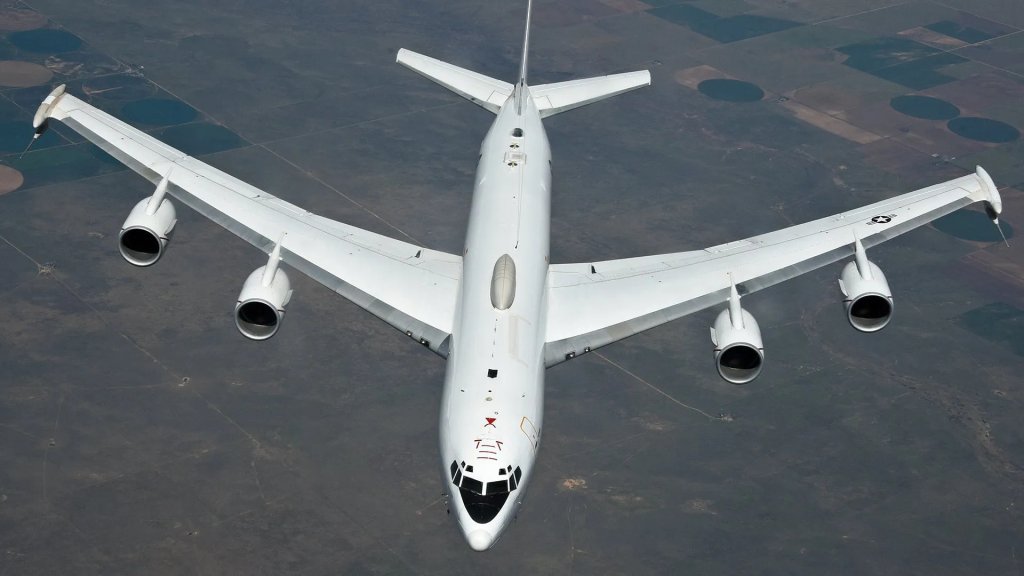
Lockheed Martin’s famed Skunk Works advanced projects divisions, as well as Raytheon (though its Collins Aerospace subsidiary), Crescent Systems Inc., and Long Wave Inc., are also part of the Northrop Grumman-led team. In November, Lockheed Martin, via the Navy, released pictures, one of which is seen below, showing the cockpit section of the first C-130J-30 destined to become an E-130J.
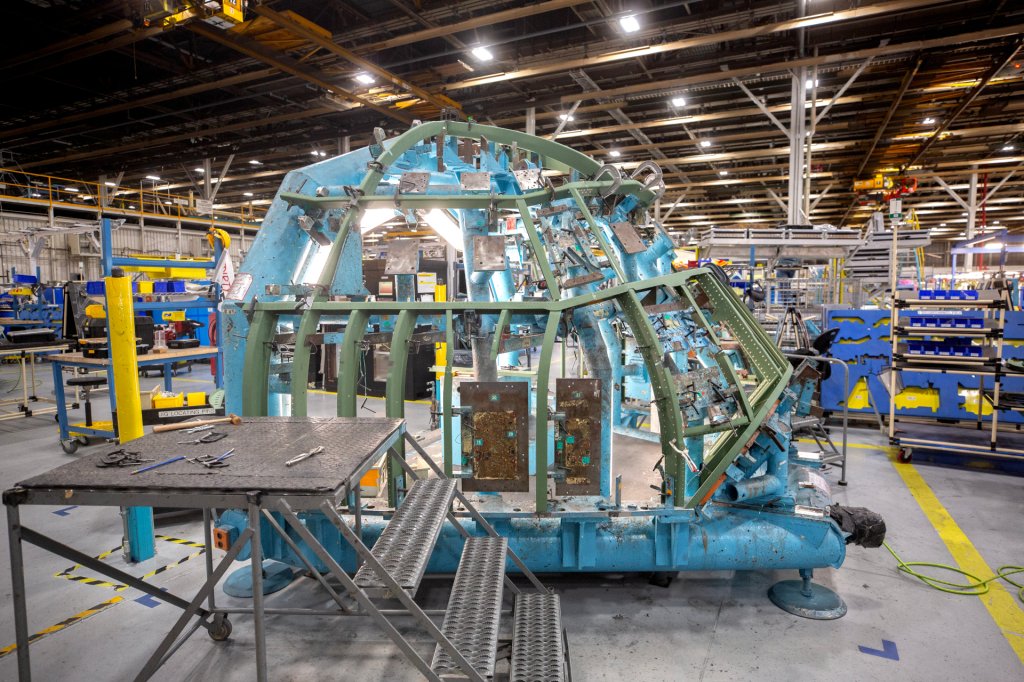
The C-130J-30 is a stretched version of the baseline C-130J cargo aircraft. The new Northrop Grumman rendering shows the E-130J will have a large satellite communications (SATCOM) dome on top of the forward end of the fuselage, similar to the one found on the current E-6Bs. Past renderings showed the dome at the rear end of the top of the fuselage.
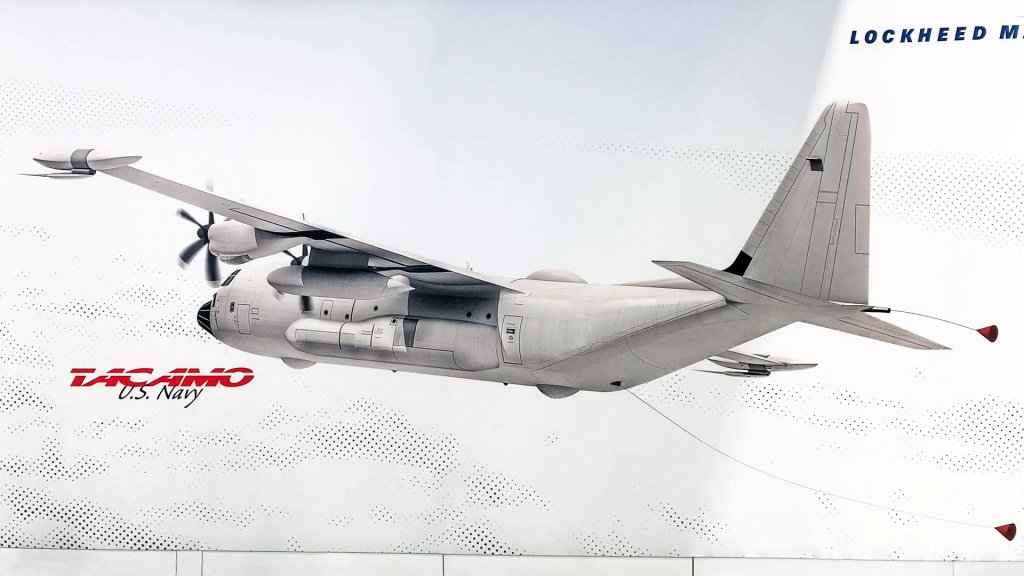
The top of the fuselage is dotted with various other antennas, as well, which makes sense given the robust and secure communications suite the TACAMO aircraft must carry. A pair of spike antennas are also seen under each wing. These are also found on the Mercury jets, as well, and are tied to high-frequency communications arrays.
A significantly extended landing gear sponson is visible on the left side of the aircraft in the new E-130J render. This is a unique modification that could have multiple uses, from helping to cool onboard electronics to housing antenna arrays. The bottom of the aircraft is not visible, but past renderings have shown additional blisters for downlink antennas needed to connect with ground entry communications points.
The rendering also shows the E-130J’s most visibly unique feature, a pair of long trailing wire antennas with drogues at the end for the aircraft’s very low-frequency (VLF) communications system. Those antennas are miles long and TACAMO aircraft have to fly slow, steep, tight circular patterns when they are in use so that the tips fall vertically down. This is the system used to communicate with submerged submarines, which you can read more about here.
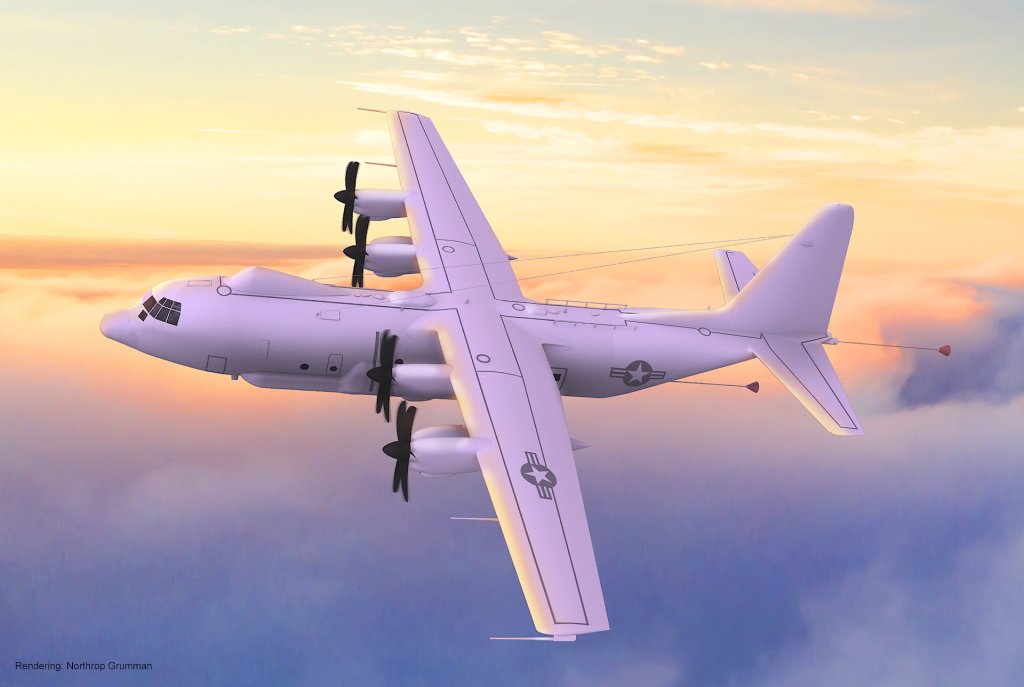
Before the introduction of the E-6 series at the very end of the Cold War, the Navy actually used specially modified EC-130G and Q aircraft to perform the TACAMO mission. The arrival of upgraded E-6B jets in the 1990s led to the consolidation of the TACAMO and Looking Glass missions.
The smaller E-130J will allow for more distributed operations from a larger number of airfields. The Navy has also cited a variety of other cost, logistics, maintenance, and training benefits as driving its decision to return to a C-130-based platform in the past, as you can learn more about in detail here. C-130 variants, including multiple subvariants of the J model, are in widespread use across the U.S. military, and with allies and partners. The E-6Bs were converted from some of the last 707s ever produced. As noted, the larger and higher-performance Mercury jets currently perform two mission sets, TACAMO and Looking Glass, as well.
“Northrop Grumman has invested more than $1 billion in digital engineering and manufacturing capabilities that will assist in rapidly designing, building, testing, and sustaining the E-130J,” Northrop Grumman said in its release. “The effort will incorporate Northrop Grumman’s technology leadership in advanced manufacturing, agile design, digital engineering and weapon system integration expertise to take advantage of Day One readiness across the Northrop Grumman-led industry team.”
It is also important to note here that the current plan is for the E-130J to supplant the E-6B only when it comes to the TACAMO mission. How the Air Force will continue to meet its Looking Glass mission requirements is not entirely clear, though its future fleet of Boeing 747-based E-4C Survivable Airborne Operations Center (SAOC) could help meet those needs, at least to a degree.

“Today is a tremendous day for the future of naval aviation’s contribution to our nation’s nuclear deterrence mission,” Navy Capt. Adam Scott, head of the Navy’s Airborne Strategic Command, Control and Communications Program Office (PMA-271), said in a statement. “With the selection of Northrop Grumman Systems Corporation as the prime contractor for the TACAMO Recapitalization Program, we are ready to move out with developing this critical asset. In carrying on the legacy of the E-6B Mercury, the E-130J will ensure our nation’s leadership is always connected to its nuclear forces for decades to come.”
“Our TACAMO mission is foundational to our nation’s nuclear Triad,” Secretary of the Navy Carlos Del Toro said in a separate statement. “The E-130J will carry on the proud legacy of Navy TACAMO aircraft and keep our nation safe.”
With the contract to Northrop Grumman today, the Navy has now fully embarked on a path to fielding its next Doomsday planes.
Contact the author: joe@twz.com
